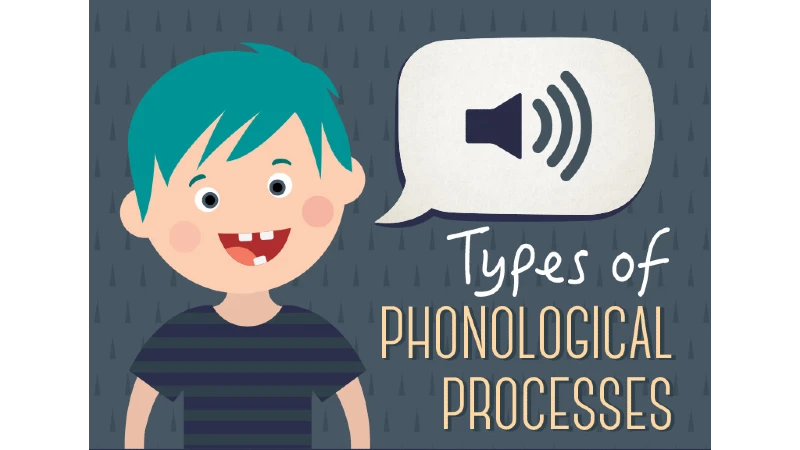Understanding Phonological Processes in Children’s Speech Development
In the journey of childhood speech development, phonological processes play a pivotal role. These are patterns of sound errors employed by growing children to simplify their speech as they navigate the intricate path of language acquisition. See the below infographics for diving deep into the nuances of phonological processes, shedding light on their significance and the natural evolution children experience in overcoming them.
The Intricacies of Phonological Processes
Phonological processes serve as stepping stones in a child’s linguistic journey. It is essential to comprehend these patterns as they are integral to understanding the natural progression of speech development. As children embark on their language learning adventure, they resort to these processes due to the initial lack of coordination among their lips, tongue, teeth, palate, and jaw. The ultimate goal is achieving clear and articulate speech.
Overcoming Speech Simplification
Children’s early attempts at speech are often marked by phonological errors, a manifestation of their developing motor skills and cognitive abilities. However, by the age of five, most children naturally outgrow these error patterns. It is a fascinating journey witnessing how, with time, they gain the ability to coordinate their articulatory organs, paving the way for more refined and intelligible speech.
Exploring Phonological Processes – An Infographic Insight
We recognize the importance of visual aids in understanding complex concepts. To complement our exploration of phonological processes, we present an insightful infographic. Created by experts at WPSpublish.com, this visual guide breaks down the various types of phonological processes, providing a comprehensive overview of their characteristics.
Unveiling the Infographic
The infographic, meticulously crafted by WPSpublish.com, categorically delineates the types of phonological processes. It serves as a valuable resource, offering a visual roadmap to parents, educators, and anyone interested in the intricacies of children’s speech development.
Types of Phonological Processes
- Substitution Processes: Explore how children replace certain sounds with others, unraveling the creative ways they adapt to linguistic challenges.
- Omission Processes: Delve into the instances where certain sounds are omitted, uncovering the factors that contribute to these linguistic simplifications.
- Assimilation Processes: Understand the fascinating phenomenon of sounds influencing each other, showcasing the dynamic nature of speech development.
- Distortion Processes: Gain insights into the subtle nuances of distorted sounds, reflecting the evolving articulatory skills of growing children.
Conclusion
This comprehensive exploration, coupled with the insightful infographic, positions us as a valuable resource for parents, educators, and individuals keen on understanding the intricacies of children’s speech development. Join us on this enlightening journey, where knowledge meets understanding, and let’s navigate the world of phonological processes together.
WPSpublish.com has put together the following infographic explaining the types of Phonological Processes:



